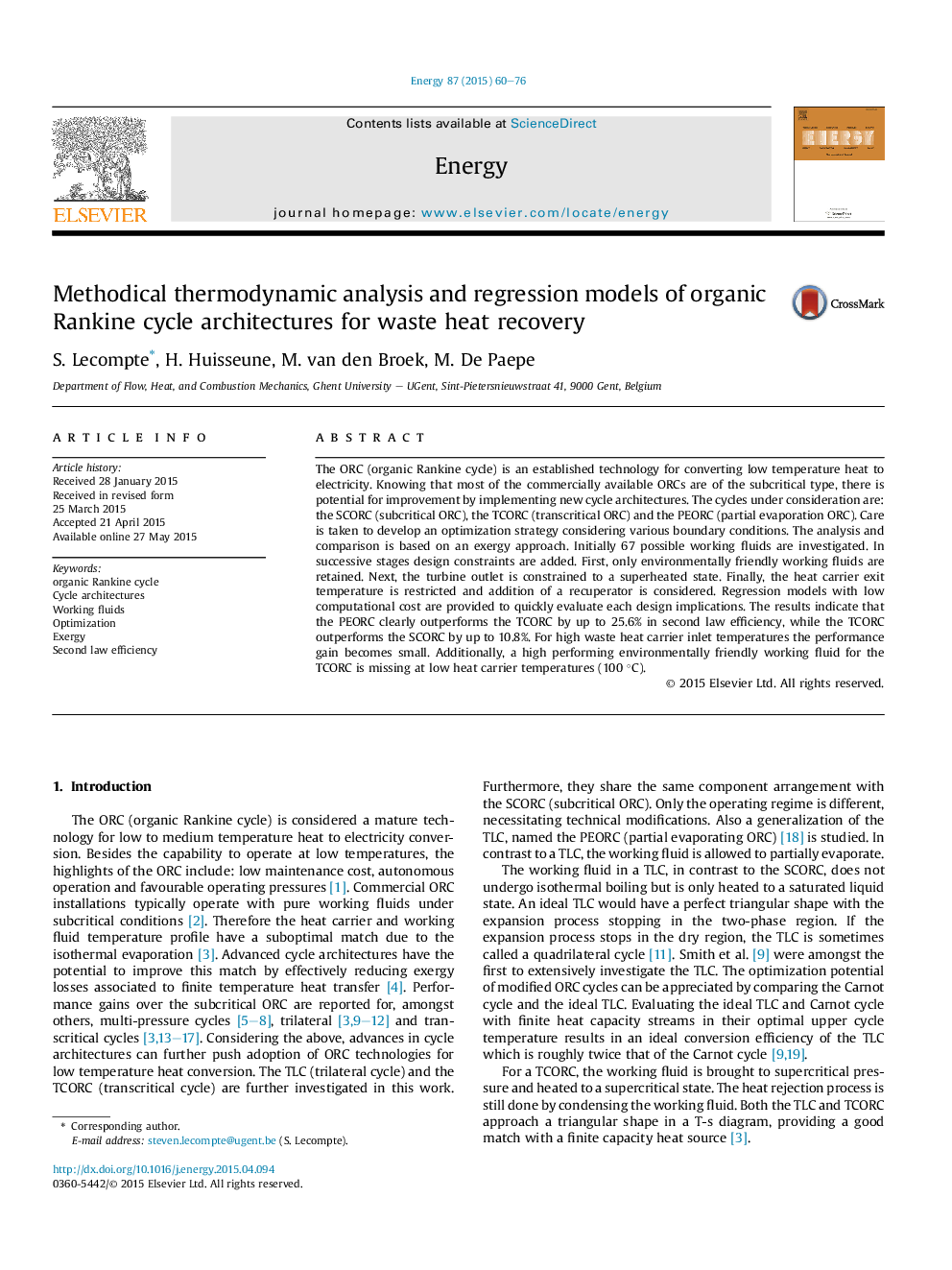| کد مقاله | کد نشریه | سال انتشار | مقاله انگلیسی | نسخه تمام متن |
|---|---|---|---|---|
| 1731816 | 1521459 | 2015 | 17 صفحه PDF | دانلود رایگان |
عنوان انگلیسی مقاله ISI
Methodical thermodynamic analysis and regression models of organic Rankine cycle architectures for waste heat recovery
ترجمه فارسی عنوان
مدلسازی تحلیلی ترمودینامیکی و مدل های رگرسیون معماری چرخه ارگانیک ارمنستان برای بازیابی حرارت ضایعات
دانلود مقاله + سفارش ترجمه
دانلود مقاله ISI انگلیسی
رایگان برای ایرانیان
کلمات کلیدی
چرخه رابینین آلی معماری چرخه، مایع کار، بهینه سازی، اگزرژی، کارآیی قانون دوم،
موضوعات مرتبط
مهندسی و علوم پایه
مهندسی انرژی
انرژی (عمومی)
چکیده انگلیسی
The ORC (organic Rankine cycle) is an established technology for converting low temperature heat to electricity. Knowing that most of the commercially available ORCs are of the subcritical type, there is potential for improvement by implementing new cycle architectures. The cycles under consideration are: the SCORC (subcritical ORC), the TCORC (transcritical ORC) and the PEORC (partial evaporation ORC). Care is taken to develop an optimization strategy considering various boundary conditions. The analysis and comparison is based on an exergy approach. Initially 67 possible working fluids are investigated. In successive stages design constraints are added. First, only environmentally friendly working fluids are retained. Next, the turbine outlet is constrained to a superheated state. Finally, the heat carrier exit temperature is restricted and addition of a recuperator is considered. Regression models with low computational cost are provided to quickly evaluate each design implications. The results indicate that the PEORC clearly outperforms the TCORC by up to 25.6% in second law efficiency, while the TCORC outperforms the SCORC by up to 10.8%. For high waste heat carrier inlet temperatures the performance gain becomes small. Additionally, a high performing environmentally friendly working fluid for the TCORC is missing at low heat carrier temperatures (100 °C).
ناشر
Database: Elsevier - ScienceDirect (ساینس دایرکت)
Journal: Energy - Volume 87, 1 July 2015, Pages 60-76
Journal: Energy - Volume 87, 1 July 2015, Pages 60-76
نویسندگان
S. Lecompte, H. Huisseune, M. van den Broek, M. De Paepe,
